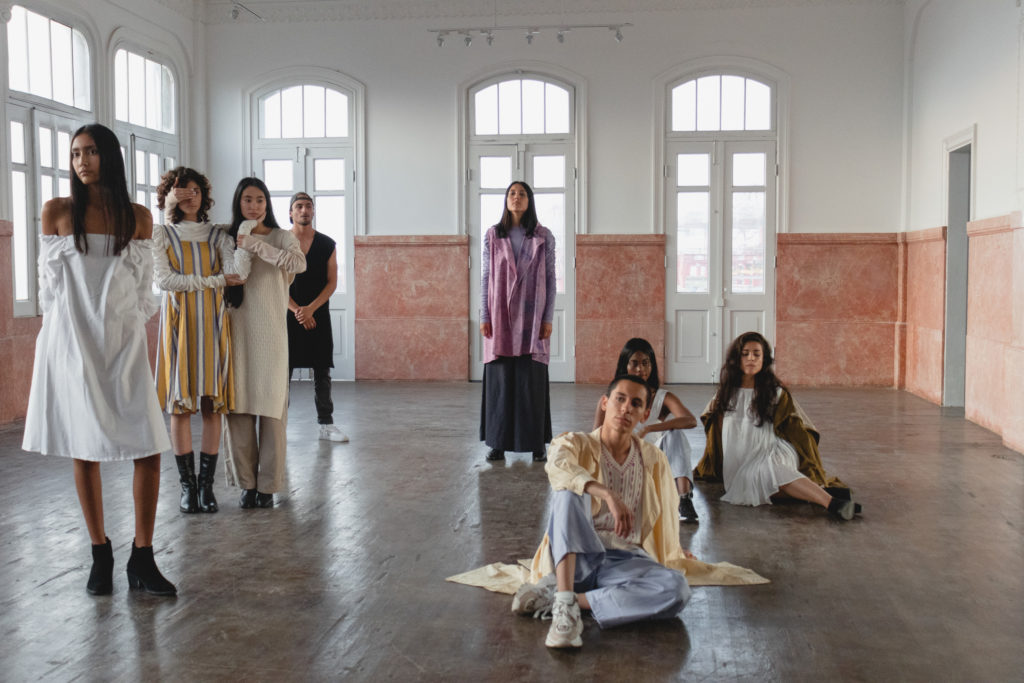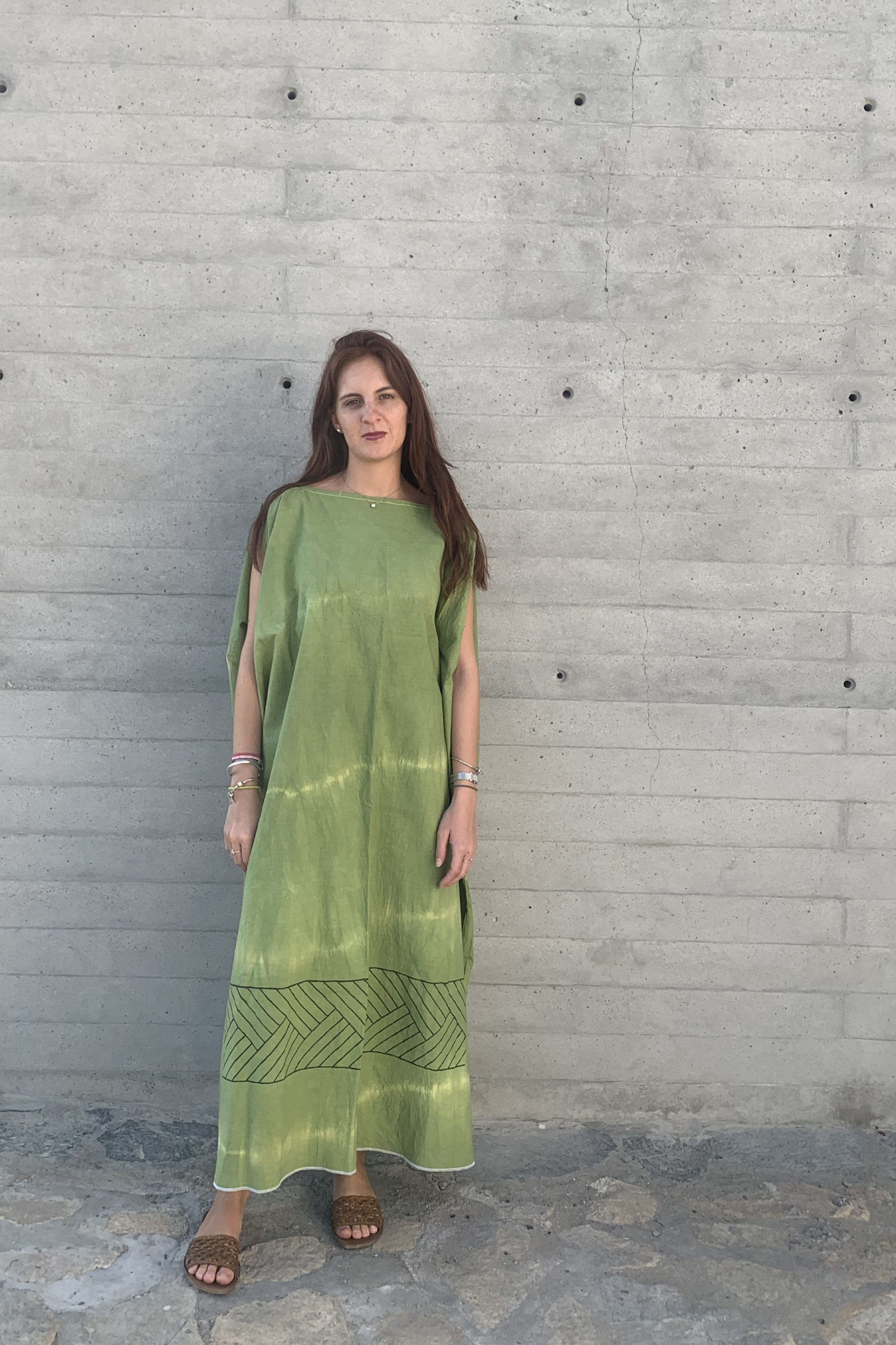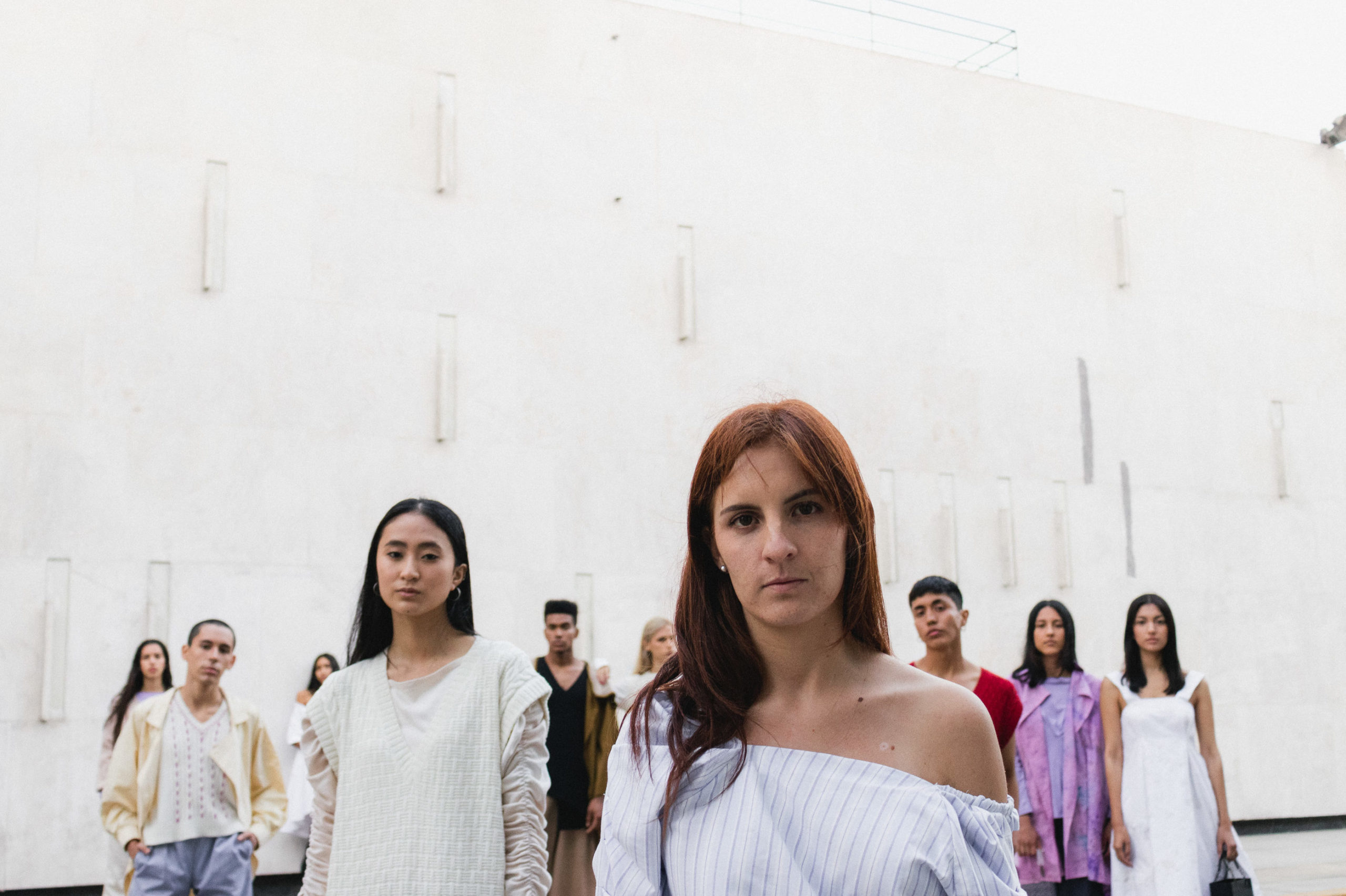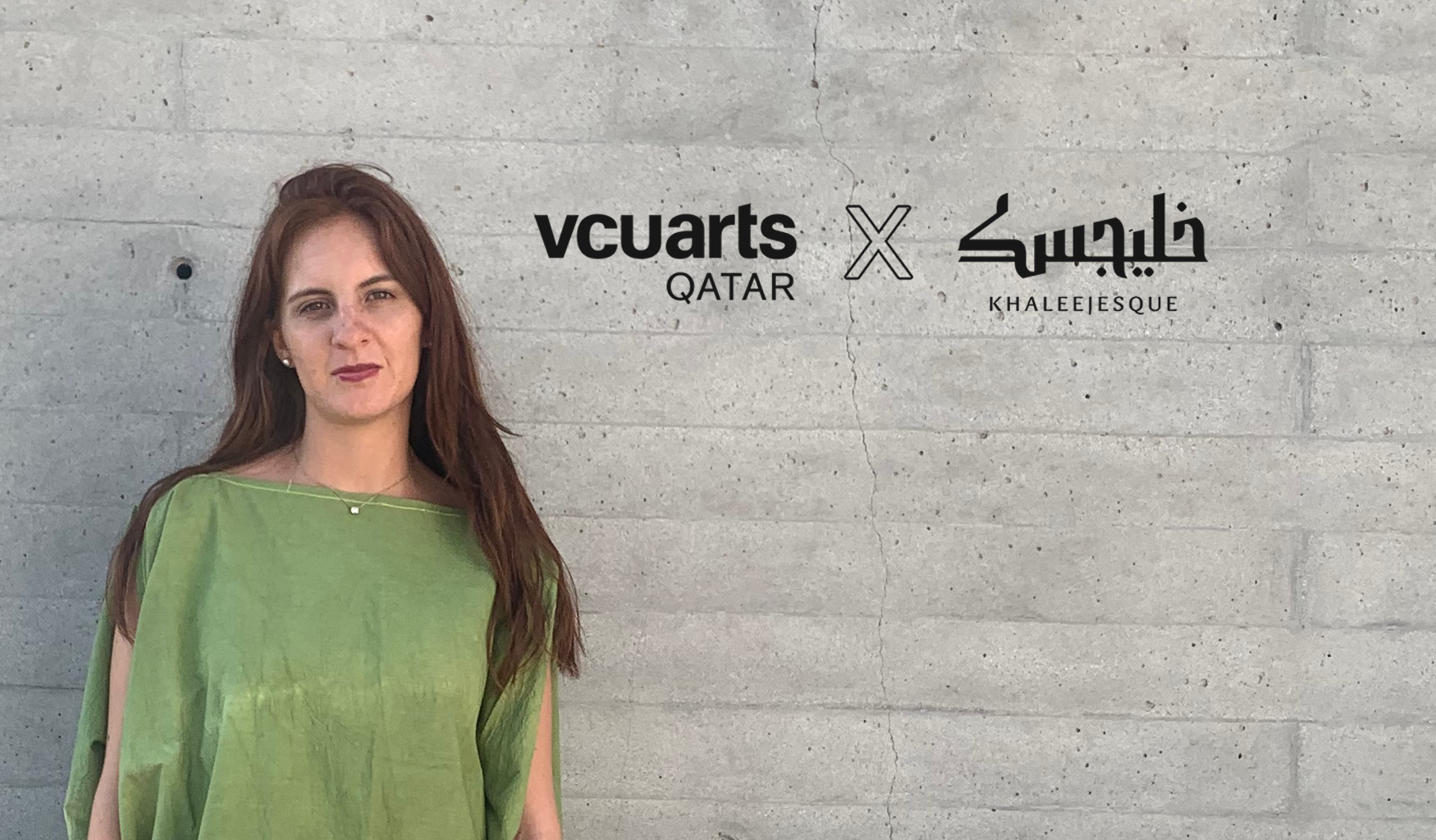For this VCUarts Qatar alumna, it was a four-year sojourn in Doha that opened her eyes to her own cultural heritage.
Maria Lucia Muñoz, a fashion designer, was in the news recently for presenting her collection titled ‘Identity’ at Monumental Callao, a cultural neighborhood in her home town of Callao, Peru. Her designs, which focused on Peruvian identity and material sustainability, were lauded by the Peruvian media for raising awareness of the country’s cultural heritage, in a contemporary yet sustainable manner.

Yet talk to Muñoz and she tells you that neither cultural identity nor material sustainability was on her mind when she initially set out to study fashion design, years ago. Rather, it was a four-year stint in the Middle East – at Virginia Commonwealth University School of the Arts in Qatar (VCUarts Qatar) – that introduced, and then made her appreciate, the need for both.
Growing up in Peru, Muñoz was captivated by the glamorous gowns being created by Lebanese designers such as Elie Saab and Reem Acra. The brands’ haute couture and celebrity customers mesmerized the then teenager – enough to make her seriously consider pursuing a career in design. She joined a university in Lima to study fashion design. While there, she decided to continue her undergraduate studies as an exchange student in Lebanon. That would, she hoped, bring her closer to the luxury designers that had caught her eye.
Those plans would change after a chance encounter with the wife of a Qatari diplomat, in Peru, who told her about VCUarts Qatar. Muñoz, who didn’t ‘know much about countries in the Arabian Gulf’, was intrigued. Her initial online research on the University was favorable. She decided to ‘try her luck at applying’ to the art and design school. She did, was accepted, and in a month, she found herself on a three-leg plane journey to the Middle East – landing in Doha in the summer of 2016.
“Coming from Peru’s winter, that was quite a warm welcome,” recalls Muñoz. “It wasn’t only the climate I had to adapt to. My time at VCUarts Qatar was a steep learning curve. First, it taught me to value my creativity and approach. Back in Peru I had been taught to think and design in a specific way, resulting in me believing that that was the only way one could be a fashion designer. And when I got to Qatar, I was taught to unlearn all of this and to find my own path, process and results. It took me a while to understand and embrace this, but once I did, I started seeing things differently and started respecting myself as an artist and a designer.
“Second, as I sat in each class at VCUarts Qatar, I learned the value of investing time and effort into preserving one’s own heritage and material culture. Growing up in Peru I was always intrigued by the different traditional clothes and the craftsmanship in my country. So, when I started fashion design studies in Lima, I would add a few traditional elements to my designs in a subtle manner. I say ‘subtle’, because back then I was made to feel it was not elegant, cool or trendy to do this.
“When I arrived in Doha, this changed. The instructions at VCUarts Qatar emphasized sustainable design – both from a material, and cultural perspective. Each student’s cultural background was celebrated. Plus, I believe being far away from your own country makes you realize how amazing and rich your own culture is. Hence, I started consciously incorporating cultural elements in my creations at university. At the end of two years of study in Qatar, when models wearing my designs that were inspired by the Moche civilization (an Andean civilization that flourished between the 1st and 8th century AD on the northern coast of what is now Peru) took to the stage at VCUarts Qatar’s annual fashion show, I probably was the proudest senior student who was presenting her collection that evening!”


While studying in Doha, Muñoz immersed herself in the host country’s culture, especially the world-class exhibitions that were a regular feature across the city’s galleries and museums.
“Sitting in Peru, I never imagined a Middle Eastern country would have such an extensive offering of art and design,” she says. “One day I would be at a Picasso exhibit, and the next day at an exhibition on Terracotta Army. Also, being able to meet and talk to designers such as Diane von Furstenberg or Dice Kayek while at VCUarts Qatar was one of the highlights of my time there. In addition to this, I’m a foodie, and coming from Peru – which has one of the best cuisines in the world – I thought it was going to be a challenge to find dining options that appealed to me. But during those few years in Doha, I was able to visit some amazing restaurants run by world-renowned chefs, and sample delectable cuisines.”
Muñoz also got a taste of fashion design at the retail level during a three-month internship at Sidra Medicine, a tertiary care medical facility adjacent to Education City where VCUarts Qatar is situated. Her role was to assist the project manager with all technical details during fittings of staff uniforms, including creating the ‘tech packs’ and ‘boards’ for the different uniforms meant for departments in the hospital. Following graduation in 2018, she worked at two design houses – ‘Farasha’ and ‘Q-Label’ – in Doha, before deciding to return to Peru in early 2020. There, she set to work to develop her own collection – but this time, with a nod to her Middle Eastern sojourn.
“I’ve always loved clothes that are neither close-fitting nor baggy,” Muñoz says. “My studies in Doha opened up endless possibilities in designs that were at once modest and modern. And that’s something I’ve incorporated in my collection here in Peru. My designs are loose but respect the wearer’s natural contour and proportions.”
Back home, Muñoz feels she’s returned with the right skillset, at the right time. She works with a renewed sense of purpose to research and showcase the material culture and indigenous designs of her country – especially the highly-prized Pima cotton that flourishes in the temperate climate of Peru



“For centuries, Pima cotton has been prized for its softness and durability,” explains Muñoz. “But it took a four-year sojourn in Doha to realize that I wanted to raise awareness about it in the context of Peru. Hence, when I returned home and created my collection, I specifically went in for local Pima cotton, added centuries-old Peruvian designs, and used botanical dyeing processes for clothing and accessories.
“For instance, I recently used a design inspired by the Shipibo culture from the Amazon area of Peru, on a handbag. I say it is ‘inspired’ because, centuries back, before designing that motif, traditional Shipibo artisans are known to follow certain rituals – they would apply a hallucinogenic herbal mixture in their eyes, and follow ancestral teachings. Such was the level of reverence that they gave their crafts.

“In addition to all this, I believe that the Peru I’ve returned to is slightly different to the Peru I left in 2016. On my return I could feel an urge among the public to appreciate and embrace our heritage, to be proud of it, while at the same time promote contemporary art and design, especially in fashion. And being such a rich country culturally, I’m delighted I’ve returned home with the skills and passion to help elevate Peru’s fashion scene to the levels that you’d find elsewhere in South America.”


And she hasn’t stopped adding to her repertoire of knowledge, either. During the pandemic-induced quarantine, Muñoz completed certified courses in sustainable fashion, sustainability and luxury brands, and fashion sociology. She is currently preparing for an online certification in digital marketing and community management, after which she intends to join a certified course in Fashion Anthropology.
For the moment, though, she is quietly savoring her success at the Monumental Callao exhibition.
“Presenting my collection last year at Monumental Callao, I was caught up in a medley of emotions,” she says. “It was the first time I had showcased my work in Peru, so it felt like being born again. I was excited, happy, anxious, nervous, and proud. Presenting those designs which are a part of me and my country to my family, my friends and my people for the very first time was amazing, and incredibly fulfilling.”
Words by Mary Joseph
This series is part of an editorial partnership brought to you by VCUarts Qatar and Khaleejesque







